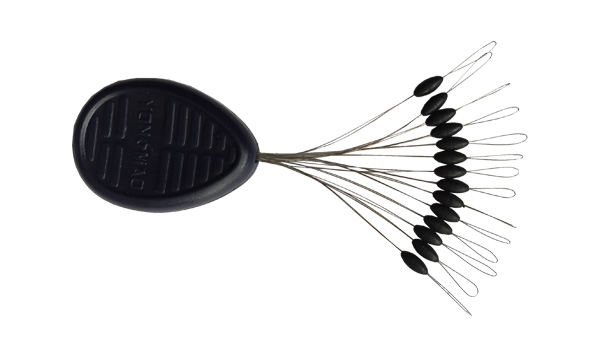

1. Choose the right float Floats are eye-catching, and […]
1. Choose the right float
Floats are eye-catching, and the choice of floats is generally to use small floats for small fish, big floats for big fish, small floats for shallow water fish, and big floats for deep-water fish. However, since there are many types of floats, and each type of float adapts to different fish conditions, it is necessary to experiment many times by yourself or through introductions by others to make a good choice.
2. Adjustment of float
Let's not hang the strands first, and then hang the heavy lead through the lead skin holder. The weight of the lead skin> the buoyancy of the float, so that all the floats are submerged in the water, and finally the floats are gradually pulled up to the surface of the water. Adjust the height of the float.
3. Adjust the adjustment
After dropping the float into the water, then gradually cut the lead skin until the required mesh number is exposed. The basic setting method is: 7 mesh soft tail float rub (adjust 4-5 to fish 2 mesh), 7 mesh soft tail float pull bait ( Adjust 3-4 for 2 meshes), hard fine tail rubbing bait (adjust 7-9 meshes, 2-3 meshes.), hard fine tail pull bait (adjust 5-7 meshes, fishing 2-3 meshes.), specific The situation still has to be determined according to the weather, season, feed and hooks, and fine-tuned.

4. Find the bottom accurately
After we hung the strands, we moved the float, adjusted the distance between the float position and the position of the positioned upper space bean, and then hooked and rubbed the bait and hung the big bait to find the bottom, so that the float was exposed to the surface of the water by 2 meshes, and finally we continued to pull up the float. 2 cm. If the float shows more than 3 meshes, it means that it has passed the bottom. The float is pulled down to 2 cm, then hang a bait ball of normal fishing size and cast a rod into the water, fine-tune the float until the mesh is about 2 meshes for trial fishing.
5. Adjust the float during the trial fishing process
If the bait has a mouth, but you can't catch the fish, it means that the fish is too good for fishing. Pull up and float for 2cm. , If the mouth of the fish is the upper or lower jaw, this is too blunt fishing, and each time you pull up and float 1 cm. If there is no mouth at the bottom of the fishing, you should pull down the float 15 cm to find the water layer where the fish is.
6. Choose the right time
When the sun is strong during the day and the water is highly reflective, we can choose a more suitable time, such as: cloudy, or when the sun is weak, or at night, etc., to choose a suitable time, which is conducive to fishing.